Polycrystalline Solar Cells A GRADE-17.10
- Loading Port:
- Shanghai
- Payment Terms:
- TT or LC
- Min Order Qty:
- 5000 pc
- Supply Capability:
- 8000000 pc/month
OKorder Service Pledge
OKorder Financial Service
You Might Also Like
Polycrystalline Silicon Solar Cells:
Solar cells is made by solar wafer, it has three categories of solar cell right now, monocrystalline polycrystalline and thin film,These cells are entirely based around the concept of ap-n junction, which is the critical part of solar module, it is the part that can convert the light energy into electricity, the thickness is from 180um to 200um, with even busbars to conduct electricity, textured cell can decrease diffuse reflection; they are often electrically connected and encapsulated as a module. Photovoltaic modules often have a sheet of glass on the front (sun up) side, allowing light to pass while protecting semiconductor wafers from abrasion and impact due to wind-driven debris, rain, hail, etc. Solar cells are also usually connected in series in modules, creating an additive voltage. Connecting cells in parallel will yield a higher current;With high quality and stable quality. Our Cells can greatly improve the performance of Solar Modules.
Advantage of Polycrystalline Solar Cells
1.Tire-1 Solar Cells’ Manufacturer Quality Guarantee. With a complete and sophisticated quality government system, our Quality Management have arrived world’s leading place. Customer can receive Tire-1 Cells Maker’s Quality Standard Products.
2.Trusted Warranty. We can supply trusted after-sales service to our customer. If our cells are found not in conformity to the specification of manufacturer, or should the inspected quantity found in shortage, or should the packing found damaged, the buyer has the right to claim to the seller. The claim, if any, should be presented to seller within 30 days after cargo's arrival date to the port, together with related inspection report and photos issued and provided by a reputable independent surveyor such as SGS.
3. World’s Leading Manufacturer Equipment. We imported the newest and leading production equipment from abroad. Advanced equipment can guarantee the stable quality of cells. Auto production line can also save labor cost which will further cut our production cost.
Bulk supply: With the production capacity of 500MW, we can produce large quantity every month. This can satisfy most customer requirement.
Specification:
Mechanical data and design |
Format - 156 mm × 156 mm ± 0.5 mm |
Thickness- - 200 μm ± 20 μm |
Front (-) - 1.4 mm bus bars (silver),blue anti-reflection coating (silicon nitride) |
Back (+) - 2 mm wide soldering pads (silver) back surface field (aluminium) |
Temperature Coefficient of Cells |
Voc. Temp .coef.%/K -0.364%/K |
Isc . Temp .coef.%/K +0.077%/K |
Pm. Temp. coef.%/K -0.368%/K |
Electrical Characteristic |
Efficiency (%) Pmpp (W) Umpp (V) Impp (A) Voc (V) Isc (A) |
18.00% 4.380 0.538 8.141 0.634 8.740 |
17.90% 4.356 0.538 8.097 0.634 8.725 |
17.80% 4.331 0.537 8.065 0.633 8.710 |
17.70% 4.307 0.536 8.035 0.632 8.695 |
17.60% 4.283 0.535 8.006 0.631 8.680 |
17.50% 4.258 0.534 7.974 0.630 8.665 |
17.40% 4.234 0.533 7.944 0.629 8.650 |
17.30% 4.210 0.532 7.914 0.628 8.635 |
17.20% 4.185 0.531 7.88 -- 0.627 -- 8.620 |
17.10% 4.161 0.530 7.851 0.626 8.605 |
17.00% 4.137 0.529 7.820 0.625 8.590 |
Intensity Dependence |
Intensity [W/m2] Isc× [mA] Voc× [mV] Pmpp |
1000 1.00 1.000 1.00 |
900 0.90 1.000 0.90 |
800 0.80 0.99 0.80 |
500 0.50 0.96 0.49 |
300 0.30 0.93 0.29 |
200 0.20 0.92 0.19 |
IV Curve

Solar Panel Images:
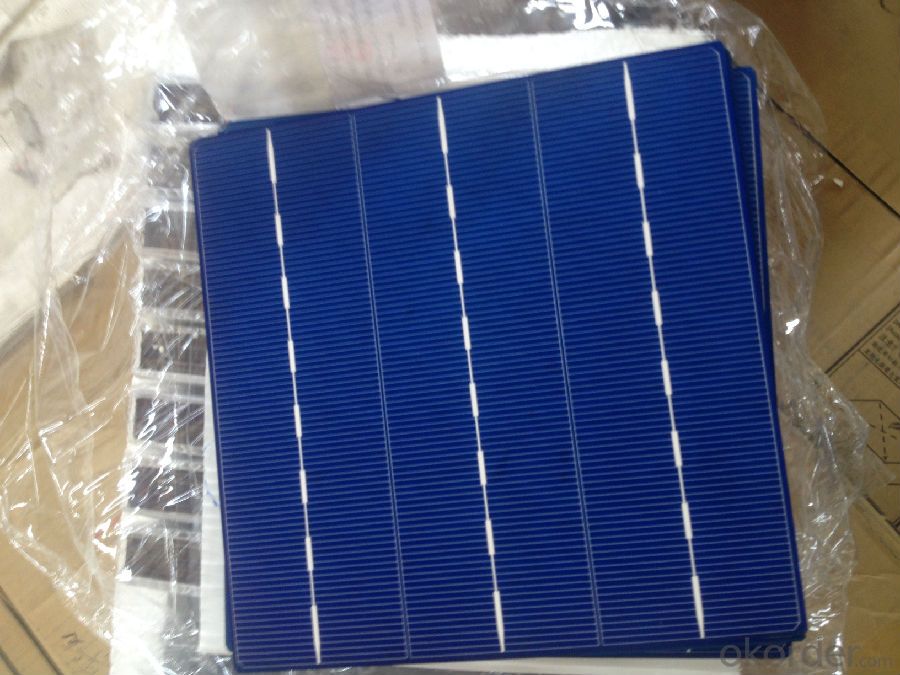
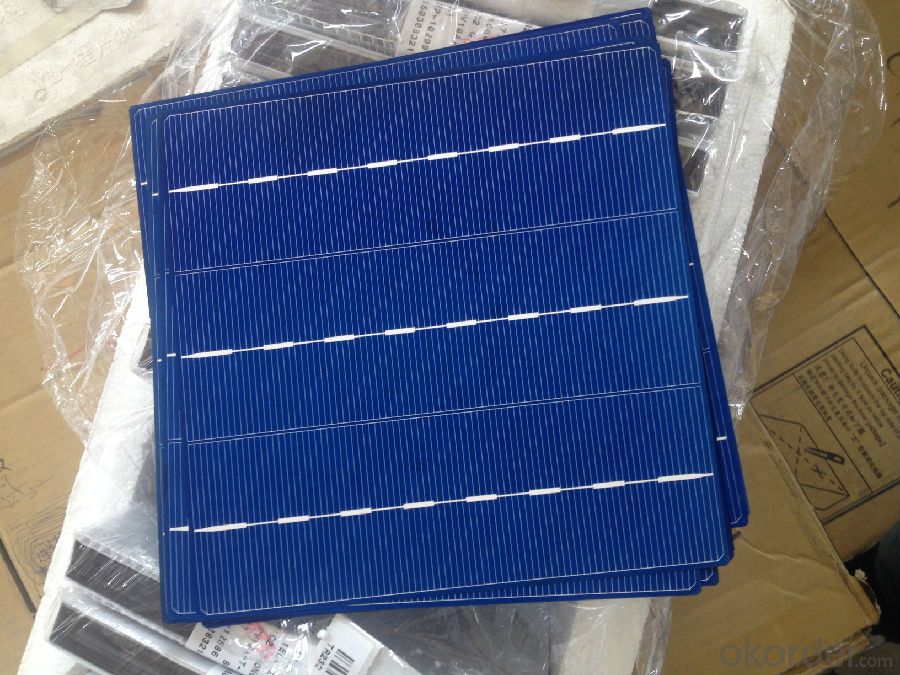
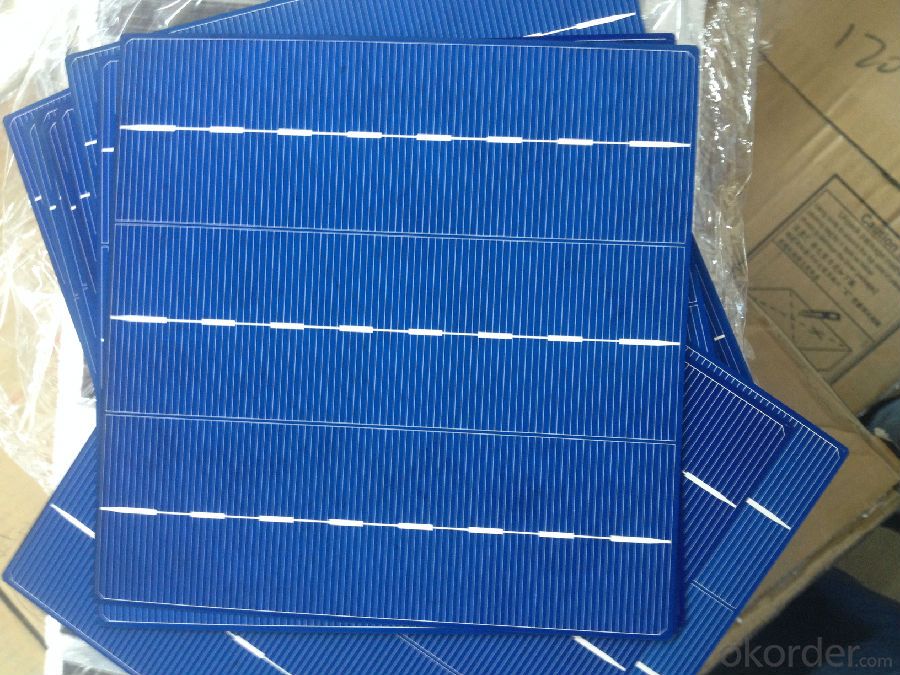
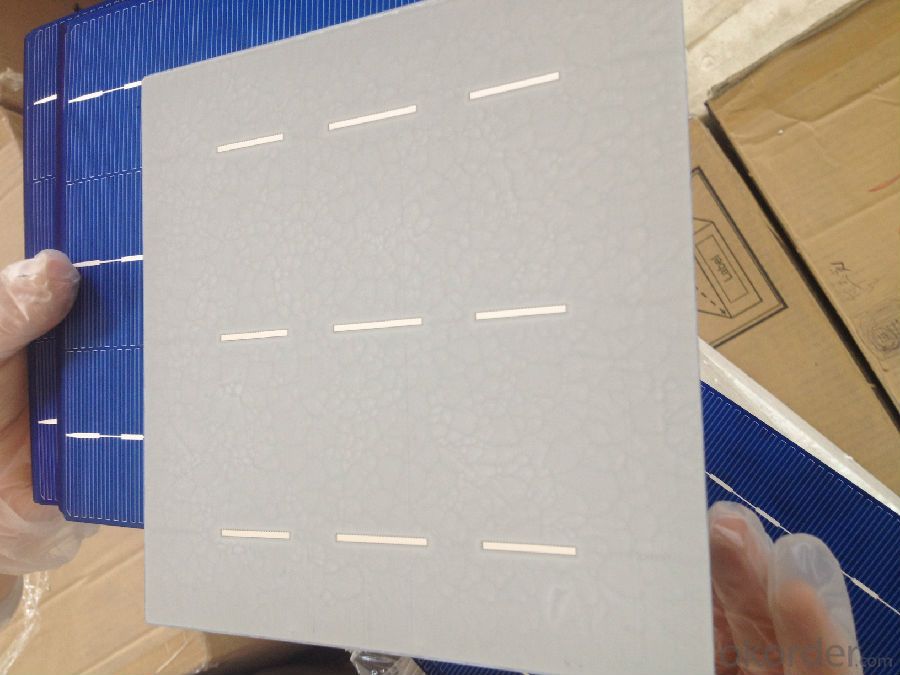
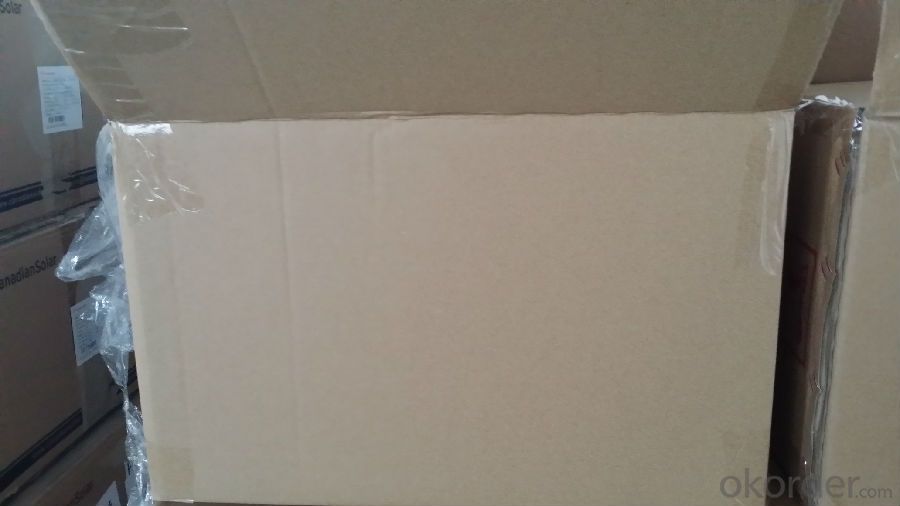
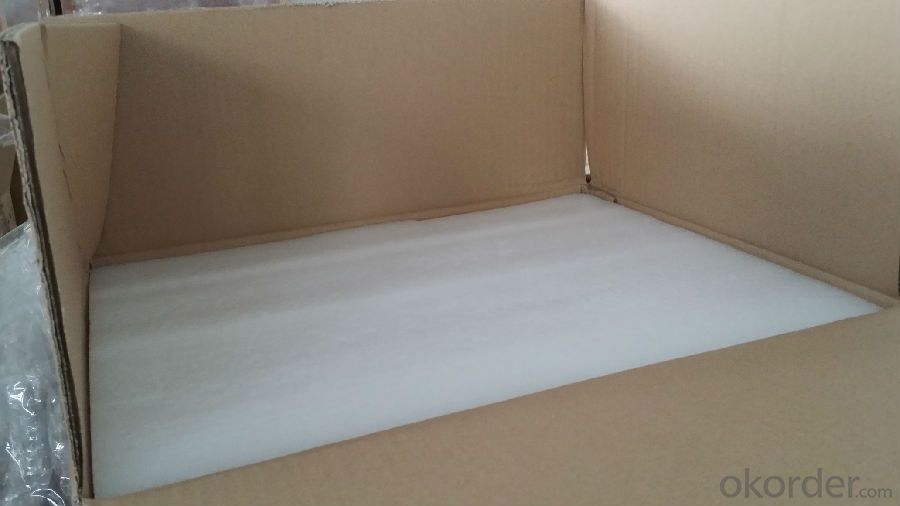
FAQ
We have organized several common questions for our clients,may help you sincerely:
①What price for each watt?
It depends on the efficiency of the solar cell, quantity, delivery date and payment terms.
②How long can we receive the product after purchase?
In the purchase of product within three working days, We will arrange the factory delivery as soon as possible. The pecific time of receiving is related to the state and position of customers.Commonly 7 to 10 working days can be served.
③Can you provide the peripheral products of the solar panels, such as the battery, controller, and inverter? If so, can you tell me how do they match each other?
Yes, we can, we have two companies for solar region, one is CNBM International, the other is CNBM engineering Co.
We can provide you not only the solar module but also the off grid solar system, we can also provide you service with on grid plant.
④What is your warranty of solar cell?
Our product can promise lower than 0.3% open box crack, we support claim after opening the box if it has crackm color difference or sth, the buyer should give pictures immediately, we can not accept the claim after the solar cell has assembled to solar panel.
• Timeliness of delivery
• ⑤How do you pack your products?
We have rich experience on how to pack the solar cell to make sure the safety on shipment, we could use wooden box or pallet as buyer's preference.
⑥ Can you do OEM for us?
Yes, we can.
Solar cells, also called photovoltaic (PV) cells by scientists, It is an electrical device that converts the energy of light directly into electricity . PV gets its name from the process of converting light (photons) to electricity (voltage), which is called the PV effect. The PV effect was discovered in 1954, when scientists at Bell Telephone discovered that silicon (an element found in sand) created an electric charge when exposed to sunlight. Soon solar cells were being used to power space satellites and smaller items like calculators and watches.
Traditional solar cells are made from silicon, are usually flat-plate, and generally are the most efficient. Second-generation solar cells are called thin-film solar cells because they are made from amorphous silicon or nonsilicon materials such as cadmium telluride. Thin film solar cells use layers of semiconductor materials only a few micrometers thick. Because of their flexibility, thin film solar cells can double as rooftop shingles and tiles, building facades, or the glazing for skylights. Third-generation solar cells are being made from a variety of new materials besides silicon, including solar inks using conventional printing press technologies, solar dyes, and conductive plastics. Some new solar cells use plastic lenses or mirrors to concentrate sunlight onto a very small piece of high efficiency PV material. The PV material is more expensive, but because so little is needed, these systems are becoming cost effective for use by utilities and industry. However, because the lenses must be pointed at the sun, the use of concentrating collectors is limited to the sunniest parts of the country.
Today, thousands of people power their homes and businesses with individual solar PV systems. Utility companies are also using PV technology for large power stations. Solar panels used to power homes and businesses are typically made from solar cells combined into modules that hold about 40 cells. A typical home will use about 10 to 20 solar panels to power the home. The panels are mounted at a fixed angle facing south, or they can be mounted on a tracking device that follows the sun, allowing them to capture the most sunlight. Many solar panels combined together to create one system is called a solar array. For large electric utility or industrial applications, hundreds of solar arrays are interconnected to form a large utility-scale PV system.
- Q:Anybody ever heard of thin film solar cell? What it that?
- I did hear that term once, but can't remember what it is.
- Q:How long do solar cells last?
- Solar cells typically last for about 25 to 30 years. However, with proper maintenance and care, they can continue to function effectively for even longer periods of time.
- Q:Are solar cells safe for the environment?
- Yes, solar cells are safe for the environment. They generate electricity without emitting harmful greenhouse gases or pollutants, making them a clean and sustainable source of energy. Additionally, their production and operation have minimal impact on ecosystems compared to fossil fuel-based power generation.
- Q:What is the impact of bird nesting on solar cell performance?
- The impact of bird nesting on solar cell performance can be significant. Bird nests can obstruct sunlight from reaching the solar panels, reducing their efficiency and overall power output. Additionally, bird droppings can accumulate on the surface of the panels, creating a layer that further hinders the absorption of sunlight. Regular maintenance and cleaning are necessary to ensure optimal performance and prevent any long-term damage caused by bird nesting.
- Q:Can solar cells be used in remote sensing devices?
- Yes, solar cells can be used in remote sensing devices. Solar cells are capable of converting sunlight into electricity, making them an ideal power source for remote sensing devices that require continuous operation in areas where traditional power sources are unavailable or impractical to use.
- Q:How do solar cells impact energy independence?
- Solar cells impact energy independence by providing a renewable and sustainable source of electricity. They reduce dependence on fossil fuels and foreign oil, allowing countries and individuals to generate their own clean energy. Solar cells can be installed on rooftops, in remote areas, or even integrated into buildings, enabling individuals and communities to become self-sufficient and less reliant on centralized power grids. Ultimately, solar cells contribute to reducing carbon emissions and promoting long-term energy independence.
- Q:How do solar cells handle shading or obstructions?
- Solar cells handle shading or obstructions by bypassing the shaded or obstructed areas and maximizing energy production from the unshaded portions of the cell.
- Q:Can solar cells be used for powering navigation buoys?
- Yes, solar cells can be used for powering navigation buoys. Solar cells are a reliable and sustainable source of energy that can generate electricity from sunlight, making them ideal for remote locations such as navigation buoys. They can effectively power the lighting and other electrical systems on the buoys, eliminating the need for traditional power sources and reducing maintenance costs.
- Q:Can solar cells generate electricity on cloudy days?
- Yes, solar cells can generate electricity on cloudy days, although the amount of electricity produced may be significantly reduced compared to sunny days.
- Q:How do solar cells perform in areas with high levels of dust storms?
- Solar cells can be affected by high levels of dust storms as the accumulation of dust and debris on their surfaces reduces their efficiency. Dust particles can block sunlight from reaching the solar cells, which in turn reduces their energy production. Regular cleaning and maintenance are necessary in areas with high levels of dust storms to ensure optimal performance of solar cells.
1. Manufacturer Overview |
|
|---|---|
| Location | |
| Year Established | |
| Annual Output Value | |
| Main Markets | |
| Company Certifications | |
2. Manufacturer Certificates |
|
|---|---|
| a) Certification Name | |
| Range | |
| Reference | |
| Validity Period | |
3. Manufacturer Capability |
|
|---|---|
| a)Trade Capacity | |
| Nearest Port | |
| Export Percentage | |
| No.of Employees in Trade Department | |
| Language Spoken: | |
| b)Factory Information | |
| Factory Size: | |
| No. of Production Lines | |
| Contract Manufacturing | |
| Product Price Range | |
Send your message to us
Polycrystalline Solar Cells A GRADE-17.10
- Loading Port:
- Shanghai
- Payment Terms:
- TT or LC
- Min Order Qty:
- 5000 pc
- Supply Capability:
- 8000000 pc/month
OKorder Service Pledge
OKorder Financial Service
Similar products
New products
Hot products
Hot Searches
Related keywords



























